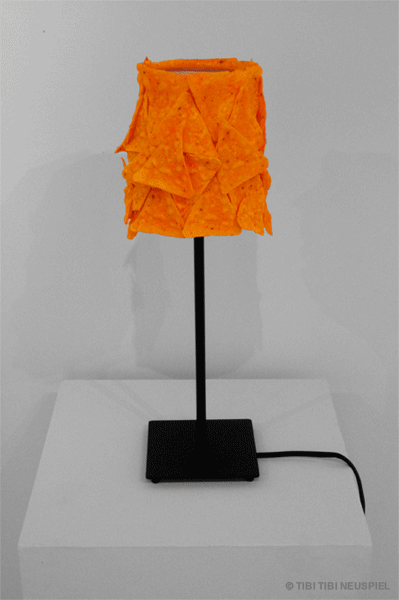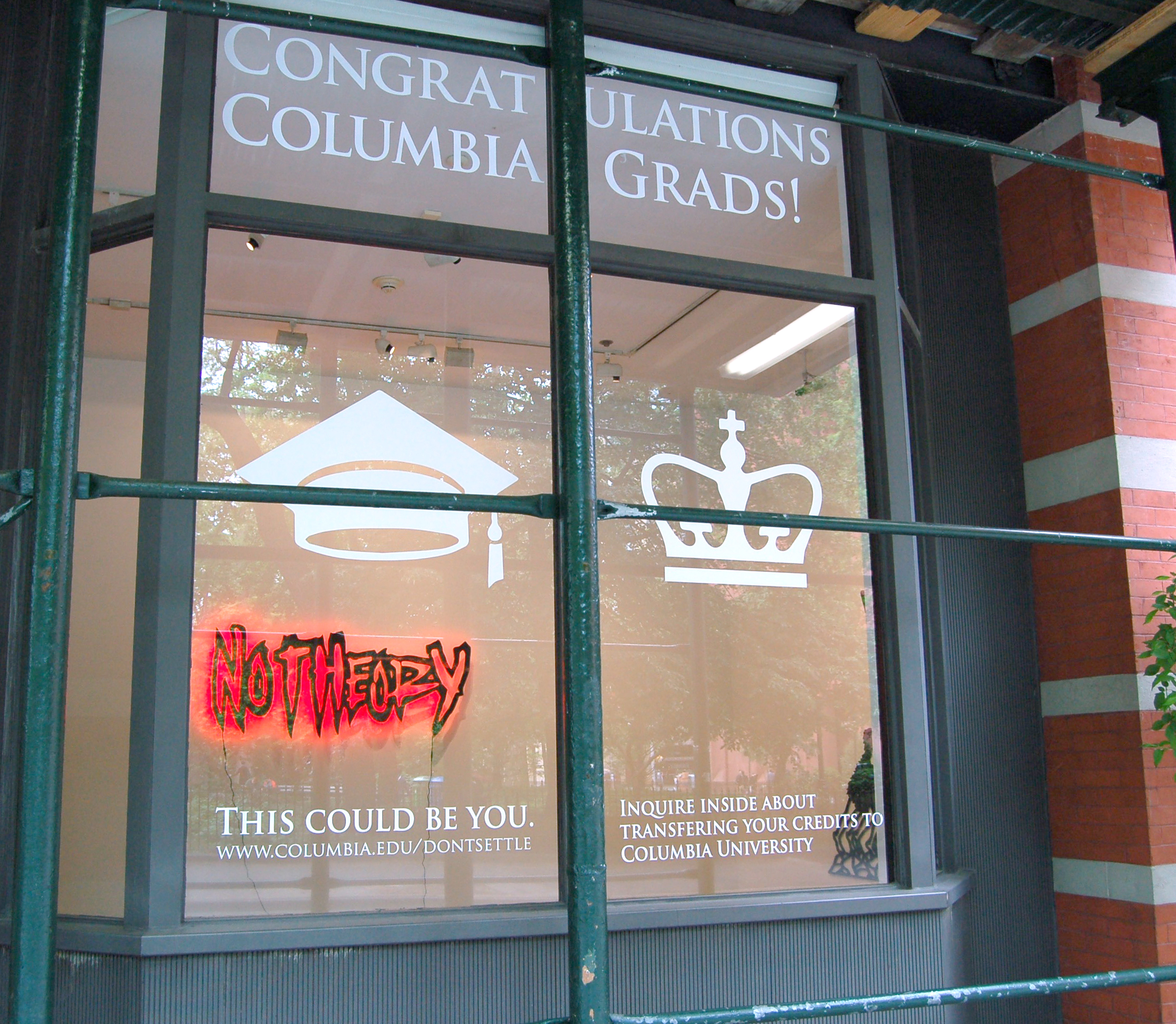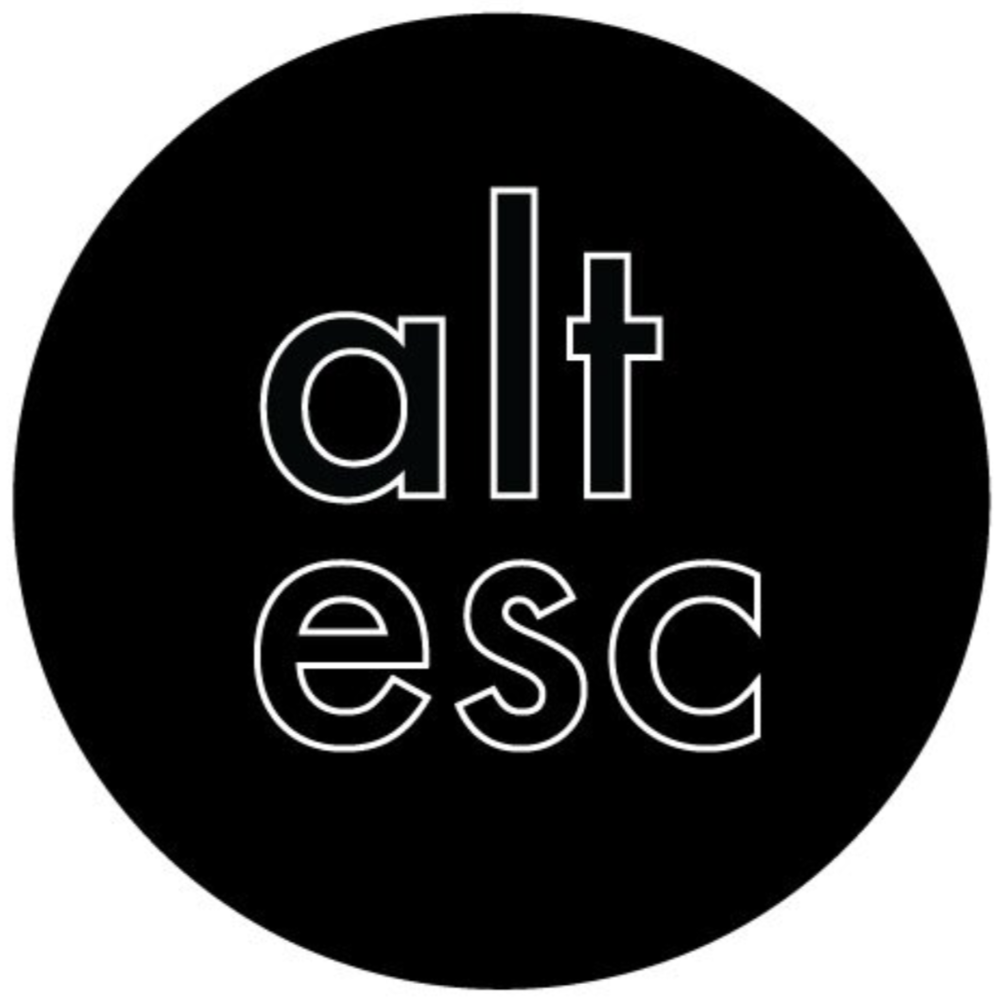Tibi Tibi Neuspiel
Tibi Tibi Neuspiel is a New York-based artist whose artistic practice literally has no boundaries - he continues to experiment in every medium from installation, video, text, to conceptual and behavioral performance. His works range from whimsy to poignant cynicism. We met him at his East Village studio where he gave us a tour with Pizza, his Labradoodle and muse. He will be showing his works at Mind Control Art Fair in San Francisco opening on January 13th.











So what sort of work do you generally make?
Generally sculptural but I am not interested in any specific technique or history of any medium. In a way I’m chasing this idea that I’ve had since I was 14. I can’t really articulate it verbally. If I could then I wouldn’t need to make work anymore.
What sort of idea?
It’s about trying to understand things by acknowledging the subtext at any given moment rather than what’s in front of me.
You seem to have a bit of cynicism in your work.
It might have been the result of moving to New York to do my graduate studies. I held New York to some higher standard before living here. Then I realized “oh it’s more of the same”, status, local celebrities, except here local celebrities can quickly become international ones. There are thousands of artists everywhere doing the exact same work but because some live in New York and their galleries prop them up, they get the attention, then it becomes part of the canon. New York has this power. Once I saw how it works, it was a bit disheartening. Maybe that’s why my graduate school period wasn’t the most productive period for me - because the cynicism took over. More recently though I’ve gotten over it.
Art school can be a real bummer. On every level there are hierarchies.
For instance artist talks made me cynical about the dynamic of status in the art world. An artist whose work isn’t great, but their career is, is on the podium while the rest without power are in the audience.
Tell us about the “Art for Dogs” project.
It was the project that got me back on track. I had questions that I wanted answers to, namely: Why doesn’t my dog like my art? He hadn’t shown interest in anything that I was making, so I tried to get a sense of what Pizza’s visual abilities were. Once I figured out his aesthetic preferences I made work tailored to them.
How could you keep track of his interest levels?
First I trained him to approach a blank wall at the end of my studio. Then I put up four different shapes, he could approach any of them, and so I inferred that the one he approached was his preference amongst the four. The next round of shapes was informed by his initial preference and so on and so on. Then I noticed he kept gravitating towards these 7 to 12 sided forms, at that point I introduced a random shape-generating program that I had him watch on my laptop while he was strapped to a heart rate monitor. I noticed that his heart rate would go up or down based on certain shapes. Definitely some leaps of logic happening here, but this isn’t science, it’s art.
Did you build an algorithm?
I found a shape-generating program online and made some modifications. The three shapes that he responded to best where turned into wall-mountable sculptures, printed in gradients from blue to yellow because that’s a dog’s visual spectrum. The shapes all had this little appendage coming off the side, which could be read as being a tail. The “tail” was always on the same side. This corresponded with an Italian study I had come across which shows that dogs have slight bias to which side of their body their tails wag, which indicates whether they are stressed or happy. They can see it in other dogs too. Their mood will change depending on another dog they encounter and whether their tail is to the left or right. All of these shapes had a “tail” that was slightly to the right, which meant the shapes were happy, so Pizza was happy.
How did “Friends” play into this?
The artwork was for dogs, not humans, but I knew that any dog that came to the gallery would be accompanied by a human handler. So I thought much the same way kids movies throw in a few jokes for the grown-ups, there needed to be something in it for them. I wondered what can I do to make this a good experience for the people? What do humans like? Humans seem to like the show “Friends.”
Who is your favorite character?
Maybe Chandler, he is the one who introduces the dry wit. I summarized the first three episodes of “Friends,” the way you would see in TV Guide or Wikipedia. I didn’t want the text to be distracting for the dogs because Pizza doesn’t like “Friends,” Pizza doesn’t care about Friends. Dogs are red and green colorblind, so I made the text in a color that was invisible to dogs as it was tonally indistinguishable from the background.
What did you learn from this project?
I realized I have a lot of questions and doubts about art, and everything else. But if I could turn them into physical artworks then they weren’t really distractions anymore.
Do you have a psychology or tech background?
I don’t. The amount of time you spend alone as an artists is good and bad, it can cause you to be too introspective where you claw yourself into these mental holes. Though I feel like sometimes you need to do that to examine your motivations and figure out what you are truly interested in, and what is just the result of “societal” expectations.
Are you now also venturing into text art?
It’s funny because when I was younger I hated text art. I thought what it was doing was giving you the answer, whereas image making was asking questions or giving suggestions. I thought if you are telling people the meaning through text you are defeating the whole purpose of making art. I see it differently now though, text doesn’t need to be literal.
What are the main themes your work with?
Paradoxically, the one I find most satisfying is doubt. There are so many moments where I’m uncertain about my actions or even my desires; whether they are my own or just ones I’ve bought in to. I know a few technical things, a few manipulation techniques that can result in an art object, but do I really know why I’m doing all this? So that’s how I operate at the moment, from the position of uncertainty.
Fake it till you make it.
I’m forever a dilettante. Learning is exciting, repetition is kind of a drag, it’s not fun anymore. Fun makes spending so many hours learning how to do something bearable. The only problem I have is that once I’ve spent all that time figuring out how to do or make something I rarely want to do it again.
So is it the search that excites you?
I guess it’s learning, self-teaching. It is easier now than ever with all these online tutorials. There are Youtube videos about any minute thing you can ever want to learn, whether it’s a computer program or how to change an air filter.
And then you were working on your food series?
What’s in the studio now is the remainder of my show from 2013 at Narwhal, in Toronto. I invested a few years figuring out how to make pretty accurate food reproductions out of urethane and oil paint. For this particular show I was using the fake-food items to modify housewares, such as mirrors, clocks and lamps from Ikea. There was an interest I had in seeing whether an art object could maintain its value as “art” once a use value was introduced.
Once something gains a function it often loses its value as art.
And sometimes removing function suddenly gives art value. That’s sometimes how I’ve heard people clarify the distinction between art and design. It wasn’t my best work though. The technique of making the food items look real took over the concept, and ultimately once you figure out the steps involved, anybody can make it. The Dorito lamp might be the only good piece from this series, titled “Oil on Canvas.”
What kind of work did you make during your graduate program at NYU?
I got accepted to two schools, Columbia and NYU. I thought of a scenario where I would be enrolled at Columbia but the whole time do a performance as an NYU student. It resulted in a Columbia University entry taking up six pages of the NYU MFA catalogue, including documentation of correspondence between me and the Chair at Columbia outlying my project. The main window of the NYU gallery also included a congratulatory message to Columbia grads and an appeal for NYU student to transfer there.
Did you actually speak with the Chair?
I’m going to leave that up in the air. The Columbia/NYU relationship reminded me a lot of the Canadian/American dynamic. For NYU, Columbia is its main rival. Much like the USA is for Canada. Most of Canadian identity is based around how we are dissimilar from Americans, while Americans are like “Oh yeah, Canada, never thought of them, they’re ok I guess.” That’s how Columbia views NYU. There’s a power dynamic in both cases, and I was wondering how complicit I was in supporting this status structure if I go to this or that school?
So was this your thesis?
It was part of it. My thesis piece inside the gallery was going to be a sequel to this one performance I did in Undergrad, which was to remake my classmates work in the time between the install and the opening. But somehow it leaked and everyone hated that idea and complained to the Chair, there were meetings. I don’t know how it leaked but it destroyed the spirit of the project once they knew about it. Maybe it wasn’t that great of an idea, but truth is, MFA shows are bullshit - you are basically paying for a show.
In the end I made this series called “Paleo Kampf” inspired by New Yorker style cartoons. I had to learn how to do this very quickly. I learned how to make vectors and cut sculptures on a CNC. The work was about purity fallacies. This fantasy that there was once a time when we lived in a true way, in tune with our environment and when things were just right. You can see this nagging sentiment expressed in different ways, from religion to diet plans.
So you are criticizing the art world?
I’m not a critic. Brooding in the studio by myself hasn’t made me very happy, so I don’t want to be too negative.
Do you purposefully use comedy?
When I was younger I used to draw hyper-realistically and I knew it was done because it looked like a photo. And I thought, “Well at least it's done now and my mom will be impressed.” When I got over that phase I no longer knew when anything was done until I discovered that when something is funny it also feels done. When it was funny it was done because it had achieved a particular form of perfection. When it works that’s what comedy is, a form of structural perfection.
It’s interesting to see all of your work together in one space because it looks like different artists made it.
My first solo show was a one-person group show. It was partly an anti-careerist gesture, and in terms of it sabotaging my own career, so far it's worked pretty well.
